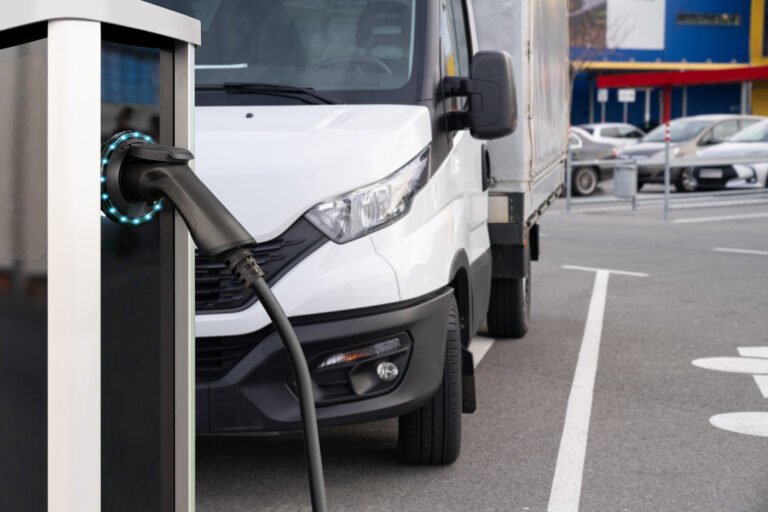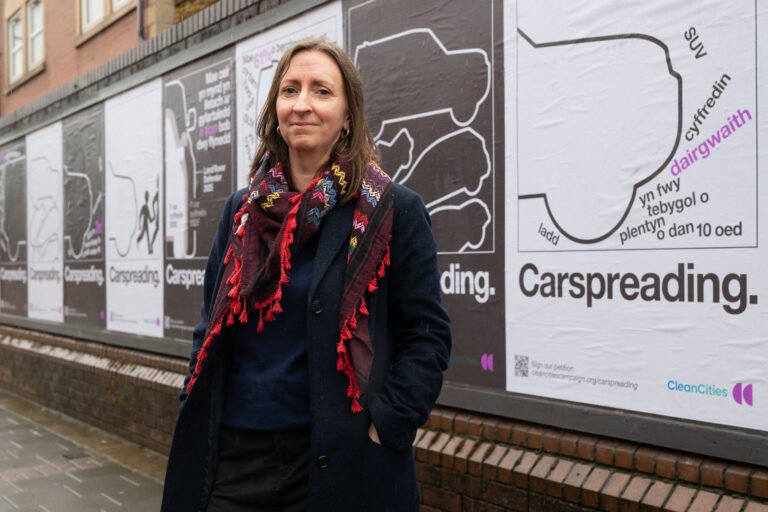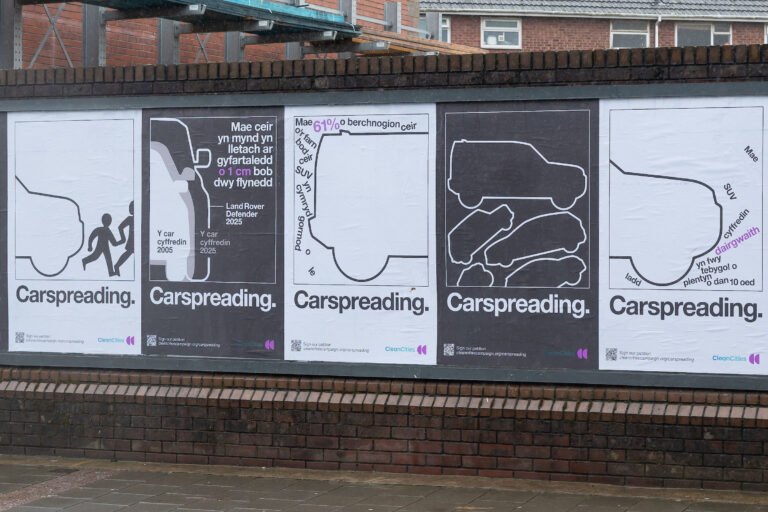
Urban carspreading: 10 times more SUVs in cities in last two decades
New research published shows the huge growth in carspreading in major urban areas in England, from 3% to 30% of existing cars in the last two decades.
- Number of SUVs in England’s cities has increased from 3% to 30% of cars
- London’s SUVs now take up the same space as the entire borough of Kensington and Chelsea; England’s SUVs would cover all of Manchester
- Call for Paris-style measures in major UK cities which have cut SUV parking by two-thirds
The number of SUVs crowding out the roads of England’s cities has increased 10 times in recent years, according to figures from researchers. New research published by Clean Cities shows the huge growth in carspreading in major urban areas in England, from 3% to 30% of existing cars in the last two decades (2002/3 – 2022/3). [1]
There have been similarly large increases in smaller urban areas (3% to 28%) and in rural areas (6% to 33%). In England as a whole, we estimate that 29% of cars are now SUVs [1, 2]. The scale of urban carspreading is mind boggling. In London, the number of SUVs has increased by almost three quarters of a million (720,000), from around 80,000 SUVs in 2002 to around 800,000 SUVs in 2023 [3]. If you tried to park these 800,000 SUVs next to each other, with a 1m gap between them, it would take up the same size as the entire London Borough of Kensington and Chelsea [4]. And if you tried to park the estimated 8.2 million SUVs owned in England as a whole, it would take up more space than the city of Manchester [5].
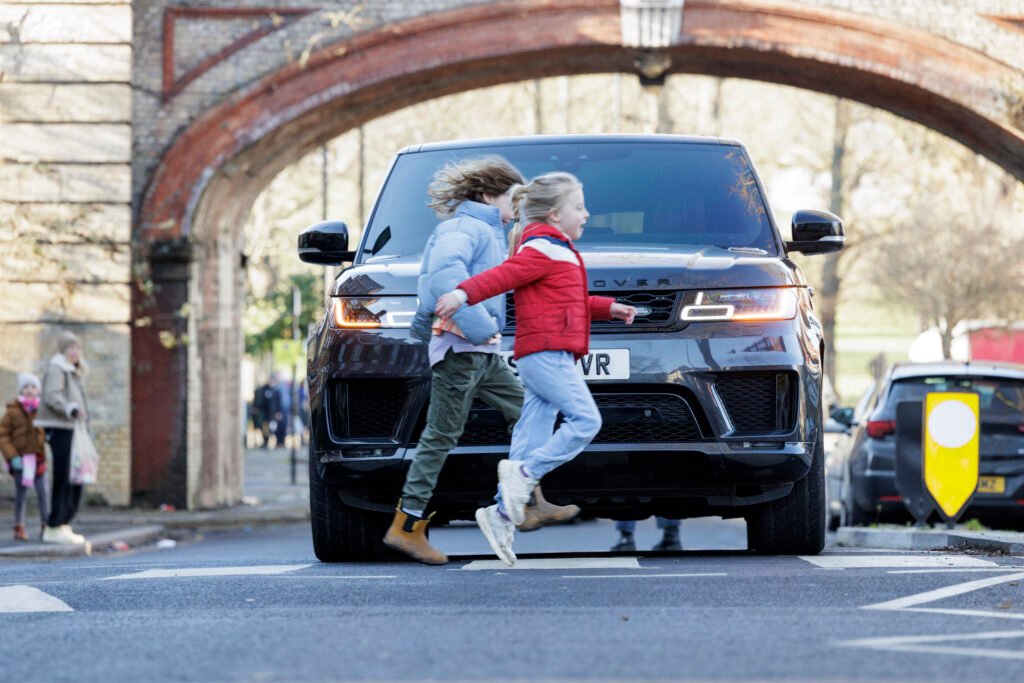
The evidence base for discouraging SUV use in urban areas is growing, with SUVs shown to be far more dangerous for children and other road users in the case of a crash. The latest research shows that SUVs on UK roads are 14% more likely to kill a pedestrian or cyclist and 77% more likely to kill a child, as compared to a traditional passenger car [6]. For young children the effect is even larger: SUVs are three times more likely to kill a child pedestrian or cyclist aged 0 to 9 years than a traditional passenger car. These large negative effects in the UK are mirrored in the international evidence, and result from the extra weight of an SUV and design features such as a taller and squarer bonnet [7]. Tests commissioned by T&E find a driver of the highest fronted model on EU and UK roads, the Ram TRX, is unable to see children aged up to nine standing directly in front. A Land Rover Defender driver cannot see children aged up to four and a half [8].
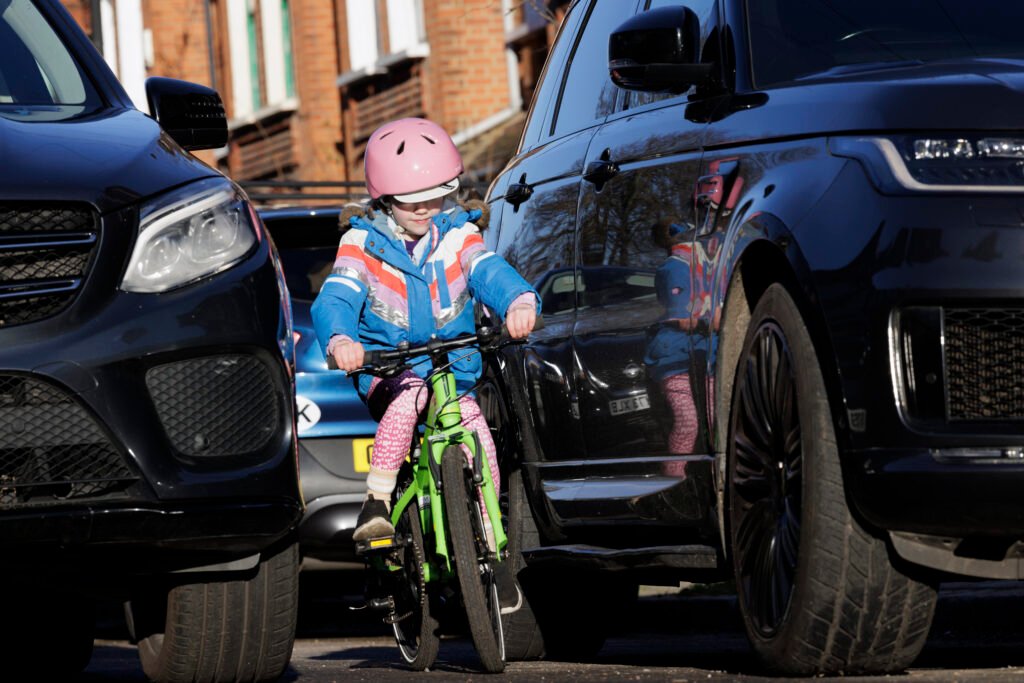
Campaigners are calling for Paris-style measures, which have cut SUV parking by two thirds, in major UK cities such as London, Birmingham, Bristol, Cardiff, Edinburgh, Leeds, Liverpool and Manchester.
Polling has found that 71% of UK car owners agree that SUVs will make parking more difficult. Cardiff has consulted with the public on a new city wide parking management plan, including a weight based threshold, while Lambeth is working with two other authorities on similar plans after calls from local campaigners and the London Assembly. Bristol and Bath are both working on plans to discourage SUV use. In Edinburgh, the council has restricted advertising for SUVs similar to tobacco style restrictions [9].
Preliminary findings from Paris show that action can have real impact. According to reports in Le Parisien, the tripling of the parking rate for “heavy” or SUV-type vehicles in Paris has already made it possible, according to the City, to reduce by two thirds the number of SUVs using surface parking [10].
“SUVs increasingly dominate our streets. In just two decades, the share of SUVs in English cities has grown tenfold. In London, the number of SUVs has swelled by around 720,000. This has important implications for congestion, public space, and road safety. The evidence is clear that SUVs increase road danger for people walking and cycling, particularly for children. Many cities around the world are bringing in targeted measures to discourage SUV ownership and use, and early reports from Paris indicate that these measures can be successful.”
Dr Anna Goodman, an academic transport researcher and director of Transport for Quality of Life
The idea resonates with members of the public, particularly in cities. Polling conducted for Clean Cities found the majority of Londoners (59%) support higher parking charges for SUVs (18% disagree) while nearly six in ten are concerned bigger cars make it more dangerous for children to walk and cycle (16% disagree) [11].
“The sheer scale of carspreading in our cities is staggering. In London alone, SUVs now take up as much space as an entire inner-city borough – that’s tarmac we could be using for homes, parks, or safer streets. These oversized vehicles are not just swallowing our public space; they’re also far more dangerous, especially for children. If we want cities that are safe, breathable and accessible, we have to get serious about tackling the rise of these urban land-hogs.”
Oliver Lord, UK Head of Clean Cities
Clean Cities are one of the founder members of The SUV Alliance, a campaign made up of a coalition of 14 environmental and transport groups. The Alliance has published a manifesto calling for changes to Vehicle Excise Duty to tax SUVs and the heaviest and most polluting vehicles more when they are sold and allowing local authorities to introduce higher parking charges on SUVs and other heavier, more polluting vehicles [12].
- More info: alex@alexbigham.com; Alex Bigham +44 (0)7830 195 812
Interviews: Oliver Lord, Clean Cities oliver.lord@cleancitiescampaign.org +44 (0)7779 811 380
Hi Res Photos: SUV Alliance – Google Drive
- Clean Cities – SUV usage in urban areas – Aug 2025 – Google Sheets Percentage of all cars in England that are SUVs 2002-2023, among participants in the National Travel Survey. There is no legal definition of an ‘SUV’, so cars are defined as SUVs based on manufacturer reported body type, as matched into the National Travel Survey based on the car’s make, model and registration year, using a look-up table provided by Vehicle Data Global Ltd.
| London | Major Urban Areas Outside London | Minor Urban Areas | Rural Areas | All Of England |
2002-03 | 3% | 3% | 3% | 6% | 4% |
2004-05 | 4% | 3% | 4% | 8% | 5% |
2006-07 | 3% | 4% | 5% | 10% | 6% |
2008-09 | 6% | 5% | 6% | 10% | 7% |
2010-11 | 8% | 6% | 7% | 13% | 8% |
2012-13 | 9% | 8% | 8% | 13% | 9% |
2014-15 | 12% | 11% | 11% | 17% | 12% |
2016-17 | 16% | 16% | 13% | 19% | 15% |
2018-19 | 20% | 20% | 18% | 26% | 21% |
2020-21 | 26% | 25% | 22% | 27% | 24% |
2022-23 | 31% | 30% | 28% | 33% | 29% |
| |||||
Number of cars in sample (all years) | 11,019 | 23,263 | 65,103 | 32,681 | 132,066 |
2. Our estimate that 29% of cars in England are SUVs is in line with recent industry estimates that around a third of cars in UK are now SUVs as of 2023) SUV Statistics and Market Trends 2024 | Saxton 4×4
3. 2003 = 3.2% of 2,473,697 cars registered in London = 79,158. 2023 = 30.8% of 2,595,408 cars registered in London = 799,386. Number of cars available is based on Department for Transport vehicle licencing data (Table VEH1104 from https://www.gov.uk/government/statistical-data-sets/vehicle-licensing-statistics-data-tables). It likely underestimates the true number of SUVs in London in 2023 as it will miss vehicles driven in London but registered elsewhere, e.g. at the headquarter of a leasing company.
4. In the National Travel Survey, the average SUV in London in 2023 was about 1840mm wide by 4300mm in length. The bare footprint only (no spacing) is ≈ 6.3 km² for 800,000 SUVs (using 1.840 m × 4.300 m → 7.91 m² each). 800,000×7.91 = 6,328,000 m² or 6.3 km². Now with spacing: Tight curbside-style buffer (~0.5 m all round each car, translating into 1m gap between adjoining cars). Effective space ≈ (2.840 m × 5.300 m) = 15.1 m² per car → ≈ 12.1 km². The London Borough of Kensington and Chelsea is likewise approximately: 12.1 km²
5. From Department for Transport vehicle licensing data (Table VEH1104), there were 27,721,905 cars in England at the end of 2023. Multiplied by 29.4% (see Table in footnote [1]), this gives an estimated 8,150,240 SUVs. Per the calculation in footnote [4], in which each car takes 15.1m², this gives an area of 123km². By comparison, the city of Manchester has an area of 116km².
7. https://injuryprevention.bmj.com/content/early/2025/04/11/ip-2024-045613
8. Car bonnets becoming half centimetre higher every year, driving… | T&E
9. Lambeth + other London boroughs: Children demand action on ‘carspreading’ as UK research shows SUVs 3 times more likely to kill a child under 10 – Clean Cities Campaign London Assembly motion: London: https://www.london.gov.uk/motions/addressing-impacts-carspreading
Edinburgh: This Scottish City Just Banned SUV And Airline Ads. Here’s Why
Cardiff: Consultation begins on a new residential parking plan for Cardiff & SUV drivers could pay more under parking plan
Bristol / Bath: Major British cities want you to pay more to park a big car or SUV- are Paris-style charges on the way? | This is Money
10. Le Parisien article – ‘Parking in Paris: three months after the price increase, “two-thirds fewer SUVs” parked in the streets’ https://www.leparisien.fr/paris-75/paris-trois-mois-apres-la-hausse-du-tarif-de-stationnement-deux-tiers-de-suv-en-moins-gares-dans-les-rues-01-02-2025-KPS2MGOEWRDZ3DYCFCHMA62B5M.php?xtor=AD-366
11. New polling Majority of Londoners (59%) support higher parking charges for SUVs (18% disagree). Majority of Londoners (59%) concerned bigger cars make it more dangerous for children to walk and cycle (16% disagree) Results for We glimpse (SUV survey) 156 7.4.2025.xlsx – Google Sheets
12. SUV Alliance and SUV Alliance full manifesto.
